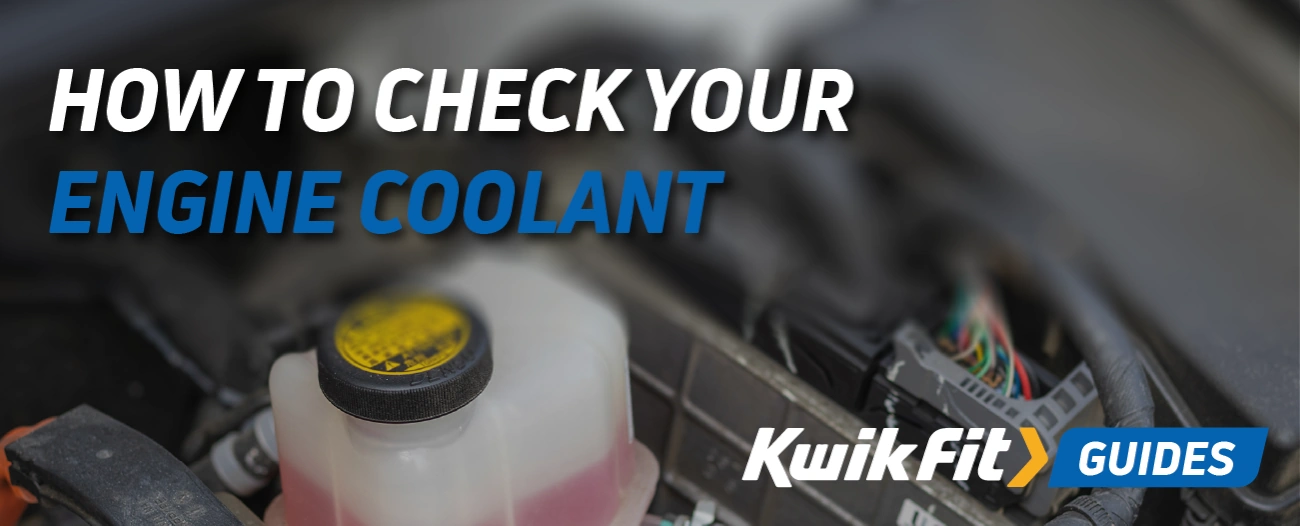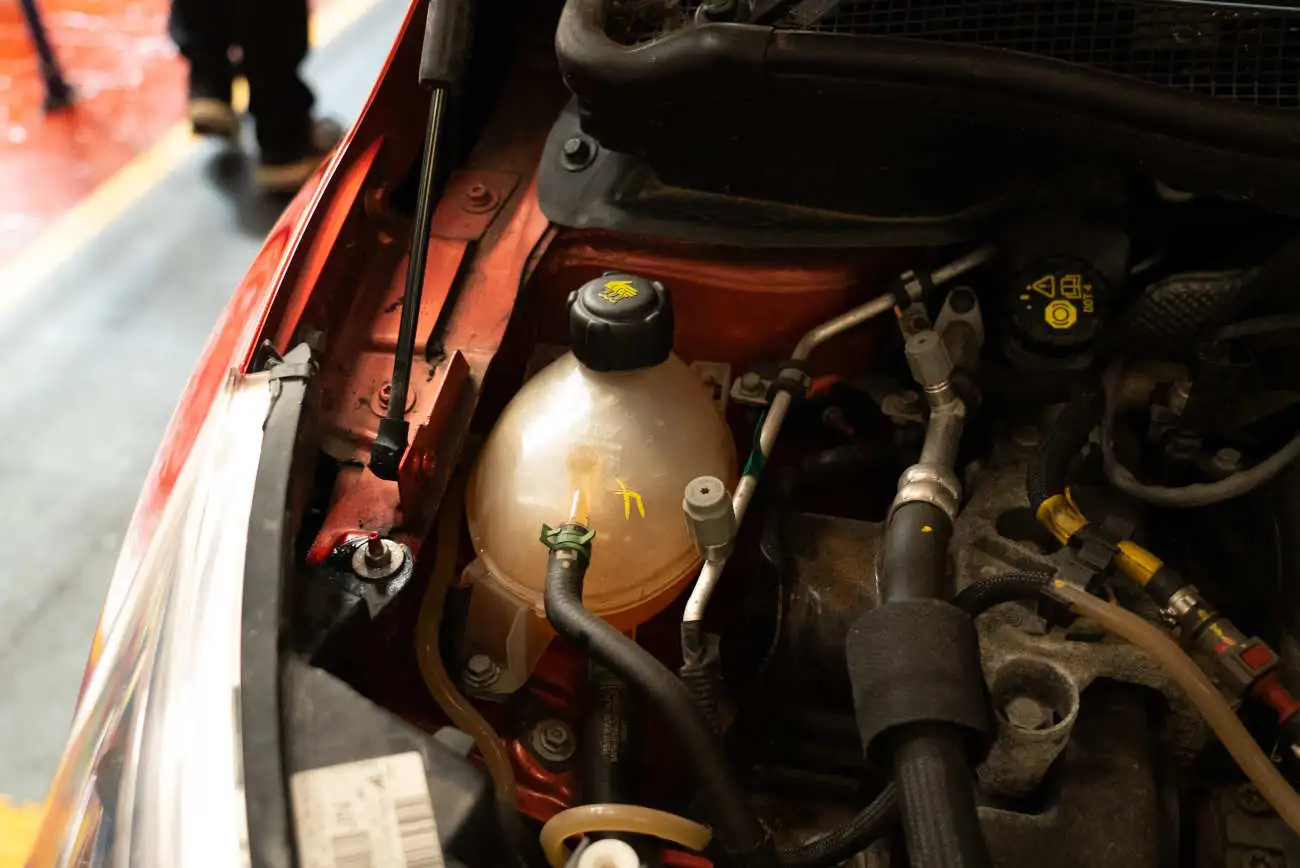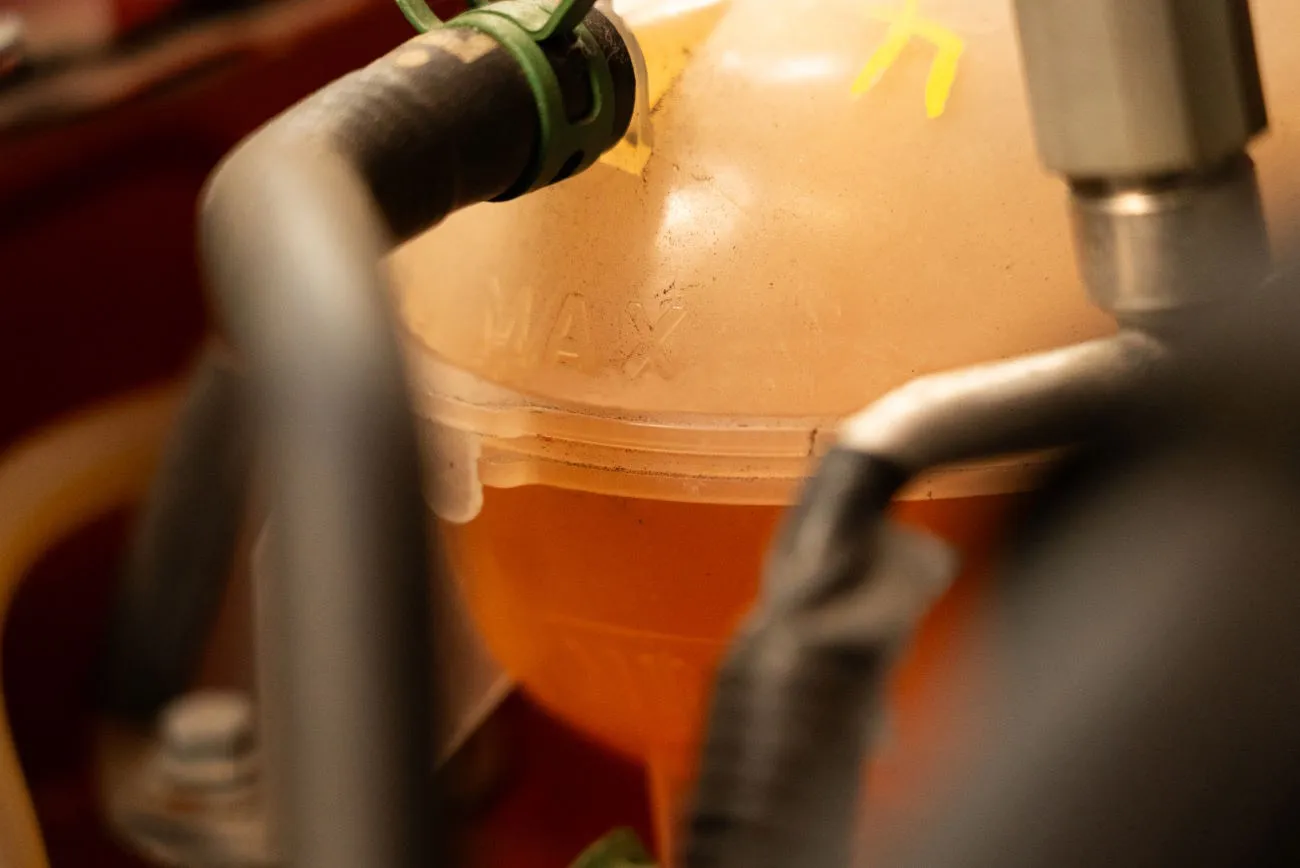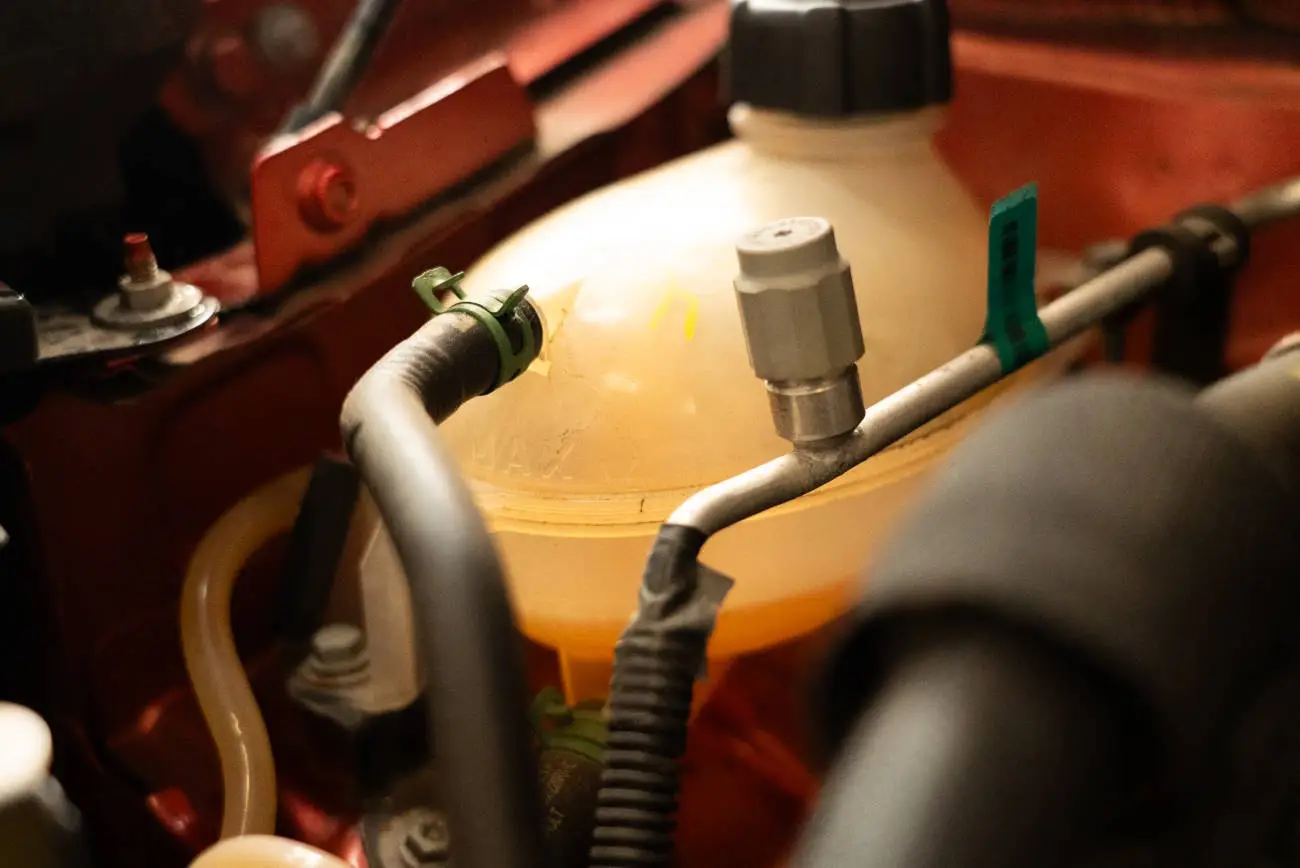How to Check Your Engine Coolant
A 6-step guide to checking engine coolant in your car.

- Make sure the engine is fully cool before beginning.
- Open the car bonnet and find the coolant reservoir.
- Check the coolant level is between the minimum and maximum scales.
- If itís low, the coolant level needs to be topped up.
- Unscrew the coolant cap, insert a funnel into the reservoir, and top up to the maximum level - or just under.
- Reapply the cap and tighten it until it clicks.
The job of engine coolant is vital for the safe running of a car. Hold your hand near the engine after a long drive, and you should be able to feel some heat coming off it. Without coolant, the heat from the engine would be significantly more powerful. In fact, it might get warm enough to melt the engine itself!
What is engine coolant?
Car engine coolant has one key job: it keeps the engine at a preferred temperature. When a car runs, the engine burns fuel to create energy. Part of this energy goes toward powering the vehicle, but some of it is lost to heat. Engine coolant keeps the car cool and functioning. It also works as an antifreeze, preventing icy temperatures from cracking interior components.
Coolant levels are just one of the things you should check before embarking on a long journey.
Coolant is a mixture of antifreeze, typically either ethylene glycol or propylene glycol, and water. Find out more about antifreeze here. The glycol is primarily used to keep the liquid from freezing over winter, but it also aids the absorption and release of heat.
Most modern cars use a sealed cooling system, a car renovation that prevents the need to top up your coolant. If there is an issue with coolant - perhaps the dashboard warning light has switched on - then you will require car servicing.

Why do you need engine coolant?
To keep the engine cool
While it sounds obvious, one of the main functions of coolant is to transfer heat away from the engine. The energy needed to power the car results in heat, which serves no function but can cause damage. Some of the heat is lost through the exhaust, but, without coolant, the rest of it hangs around the engine. Very quickly, the engine components overheat, leading the car to fail, and even potentially causing parts to melt.
With coolant, the excess heat is absorbed and moved away from the engine. The heated coolant travels to the radiator, where the heat is released as the coolant is chilled by the airflow caused by the cars' movement.
When the vehicle is running, but stationary, the airflow from the fan works to cool the coolant. No longer warm, the coolant can return to the engine, and absorb more heat. This circular system effectively keeps the engine from overheating without requiring a large amount of coolant or car maintenance.
As antifreeze
Car engine coolant keeps the temperature of the vehicle steady, and that also means preventing it from freezing. Half of engine coolant is concentrated antifreeze. The antifreeze allows the coolant and engine to work as intended, even at low temperatures.
Antifreeze prevents damage occurring when low temperatures might cause liquids in the engine to freeze. When water freezes, it expands. This could lead to delicate internal pieces splitting and cracking. Sometimes, frozen cars donít just take a while to start in the morning. Broken engine cases might mean they canít start at all.
To prevent corrosion and scale
As well as maintaining temperatures, coolant is able to protect the rubbers, plastics, and metals that are found in the engine. With the antifreeze in coolant running through the engine, scale build-up and corrosion can be prevented.
Avoid overheating with coolant
Without coolant, an overheating engine could lead to some expensive car repairs. The circling coolant transfers away excess heat, keeping your engine running smoothly. And on cold days, the antifreeze in coolant prevents frozen water from cracking the interiors.
Check your coolant and antifreeze levels by booking in for a service at your local Kwik Fit.
1. Make sure the engine is fully cool before beginning.

2. Open the car bonnet and find the coolant reservoir.

3. Check the coolant level is between the minimum and maximum scales.

4. If itís low, the coolant level needs to be topped up.

5. Unscrew the coolant cap, insert a funnel into the reservoir, and top up to the maximum level - or just under.
6. Reapply the cap and tighten it until it clicks.






